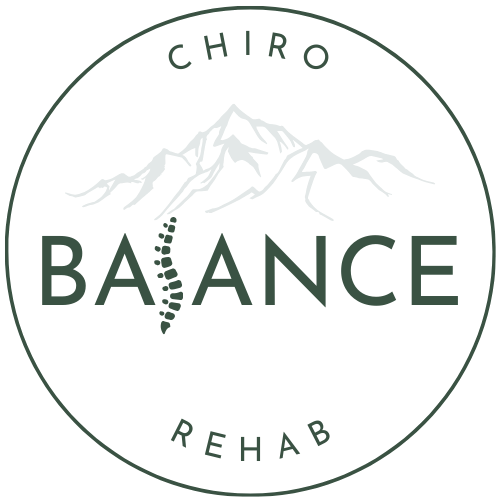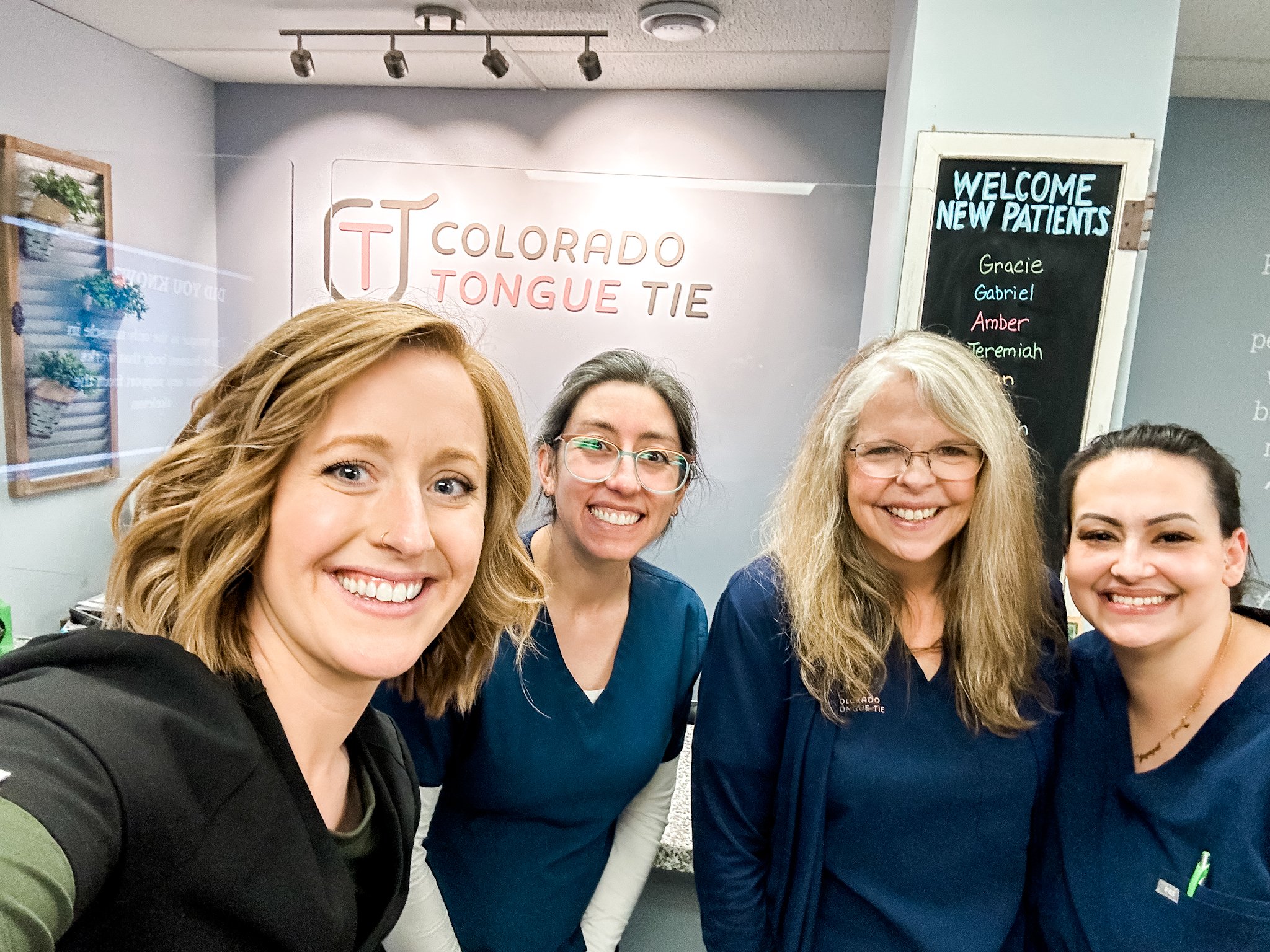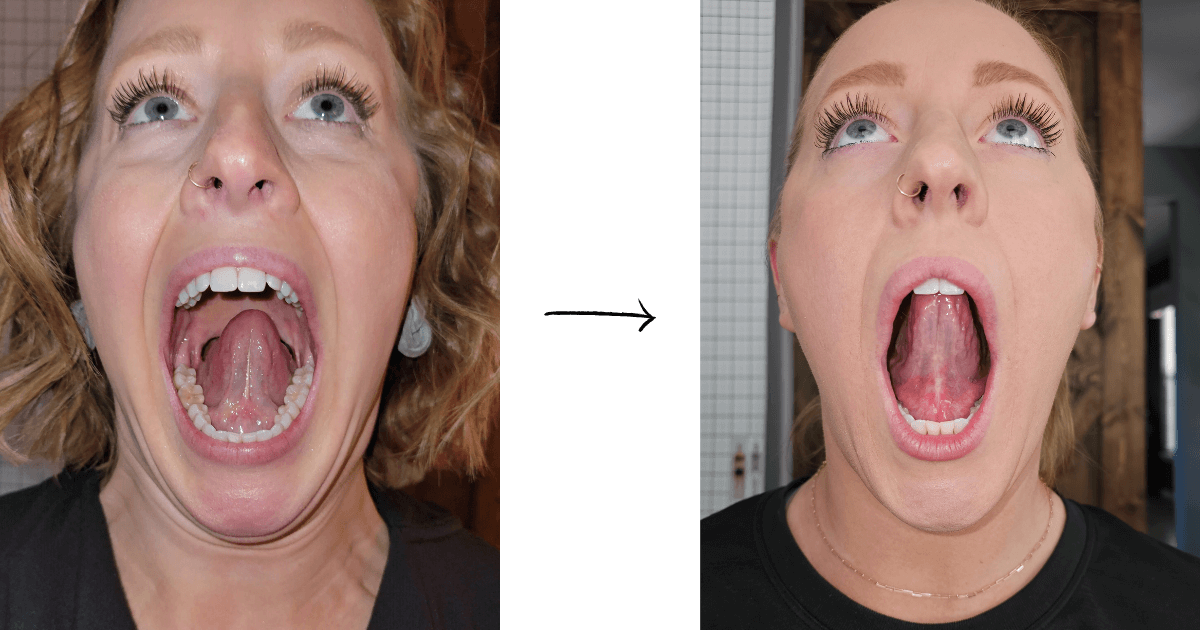My Adult Tongue Tie Release: Symptoms, Providers, and Results
First things first, I’d like to state that there are different types of tongue ties as well as lip and cheek ties. Oral ties encompasses all of these, but since tongue tie is the verbiage everyone knows, I’ll be using it throughout this little post.
Now, onto the good stuff…
Tongue Tie is undoubtedly one of the hottest topics in the infant care world, but did you know that adults can have tongue ties too? Not only can we have them, but we can also get them released. Now, the frenectomy procedure for adults and tiny tots (like most other care) is different. For adults, there is typically local anesthesia, sutures, post-procedure wound care looks a bit different and myofunctional therapy is a MUST. One thing that does remain consistent is a NEED for pre and post-release bodycare. As an adult who has had a tongue-tie release procedure, I cannot begin to tell you just how life-changing the experience and outcomes can be. Let’s dive right in!
How did I know I had a tongue tie?
I’d been working in the oral ties space for a few years and found that when parents were hesitant to have put their baby go a procedure, they frequently asked the question, “What would the long-term implications be if these ties weren’t released?” It’s a great question and as I found more information on how tongue ties can impact sleep quality, sinus/facial development, ADHD, tension patterns, etc., the more blatantly obvious it became that I likely had a tongue tie. In fact, every dentist that I have ever seen has commented on how small my mouth was and how there, “wasn’t much room” for them to work. The list compounds:
Chronic ear infections, tonsil and adenoidectomy at an early age
Sleep issues-
I fell asleep extremely quickly and woke up frequently throughout the night
Frequent nightmares and bad dreams (when I did actually dream)
Chronic neck and mid-back tension-
Chiropractic, physical therapy, craniosacral therapy, massage… none of it “stuck” long-term
Long face and underdeveloped jaw structure
Chronic tension patterns throughout the left side of my body
Left base of the skull, frequent ringing in the left ear, left sacroiliac joint, and the left knee
Pain in my mid back if I tried to stand upright
Inability to sit with my legs out in front of me in an L-shape- would cause a 4/10 pain in the mid back
MOUTH BREATHING
Mouth breathing. THIS was the one that got me. Waking up with a dry mouth from mouth breathing and walking around on a daily basis with my mouth hole just gaped open was the tipping point for me. If you haven’t read Breath by James Nestor and you’re a mouth breather- do it. I knew that this was extremely unhealthy and played a huge part in my sleep quality, energy, stress levels and quite honestly, just overall health.
Choosing My Tongue Tie Release Team
1. Orofacial Myofunctional Therapy
I contacted THE Kimmie Herrera of Smile and Airway Health after realizing that I needed to be assessed for oral dysfunction and a possible tongue tie.
The first visit was in person, but her option for virtual visits made it SUPER convenient and easy to keep on track!
Nothing makes you feel more validated than an expert telling you that your concerns are justified based on their exam findings. Kimmie tied everything together at the end of the appointment by explaining how her findings (decreased ranges of motion, functional deficits and compensation patterns due to… surprise… a tongue tie) would explain a lot of my symptoms. If a beam of light would have emerged from behind her during this evaluation, it wouldn’t have surprised me. So many answers in one visit. We set up appointments to work on strengthening some oral motor patterns prior to the release. This is imperative to the process because you can obtain improved range of motion with a tongue tie release, but your body then has to know what to do with that extra range. The first visit looked a bit like this:
An extremely thorough history, running me back through my childhood and worked her way up to present day
LOTS of photos were taken to document ranges of motion, function and compensation patterns (see just a few before and afters below)
An assessment of the range of motion and function of my tongue, mouth and surrounding structures
2. Craniosacral Therapy
Lisa Foster was my go-to for some bodywork pre- and post-release. Since bodywork is essential for optimal results, Lisa helped to not only release fascial tension through gentle methods but also helped to calm my nervous system by helping my body to feel less tense and up-regulated.
3. Chiropractic
We simply can’t chat about a tongue tie release and NOT bring up some great chiropractic care! I had a chiro friend adjust me and perform soft tissue release to decrease fascial tension to help ensure my body was moving optimally. Since I have chronic tension patterns, the adjustment was INCREDIBLY helpful in creating mobility within specific joints and improving function by decreasing tension in compensating areas (jaw, neck, shoulders, etc.). I also developed some at-home care protocols to help:
decrease tension in the areas that pull the neck and shoulders forward
focused on strengthening areas that help to bring the shoulders back and down
core engagement exercises to help with posture
manual releases within the mouth and jaw to help decrease tension
mobilization techniques along the fascial plane that runs from the bottom of the foot to the tongue
Dr. Jesse conducted the main event. The entire office was extremely professional, kind and punctual. I’m a pretty naturally anxious person, but the fun banter and dad jokes provided a comedic relief that I greatly appreciated. The waiting room was pretty much non-existent. I quite literally sat down and then was called back. How many offices can claim that sort of efficiency? I truly couldn’t be more impressed with my overall experience. Dr. Jesse determined that my tongue and both the upper and lower lip needed to be released I was in and out in about an hour!
What does aftercare look like for a tongue-tie release?
Surprisingly enough, the release site itself was totally fine the day after the release and the only place I was sore was in the back of my throat. I was able to eat pretty normally immediately and was surprised by just how “okay” everything was feeling. I was armed to the gills with soft food options and had expected to be in a good amount of discomfort post-release so I was quite elated to find that it was truly not bad at all!
In the following week, I continued doing the exercises given to me by both Kimmie and Dr. Jesse until the sutures dissolved and then it was onto the big stuff. I started working on keeping the healing wound stretched to prevent re-attachment and started on some coordination exercises provided by Kimmie.
These exercises continued for about 4 months total and decreased in frequency as time went on. To be quite honest, despite being essential, the stretching and myofunctional exercises were the most challenging. ONLY because they have to be done frequently and regularly. I just had to keep reminding myself that they were one of the most crucial parts of getting the results I was looking for. I saw Kimmie on a regular basis to check in on progress and progress to the next set of exercises. Then, on the glorious day of August 8, 2023 I was finally cleared for simply “wellness” exercises.
What were the results of the tongue tie release?
This is my favorite part…
I’M OFFICIALLY A HUMAN THAT BREATHES OUT OF HER NOSE (I could not clap any louder for this one)
I sleep through the night without waking AND have dreams… like normal dreams, no more nightmares
I wake up refreshed and actually feeling like I got some sleep
My mid back no longer bothers me and I feel like I can get deeper breaths
This in itself decreased my anxiety greatly
I actually didn’t even realize until my evaluation, but… I no longer have the nagging base of the skull neck pain!
My neck range of motion is SUBSTANTIALLY improved
I’m able to sit on my butt with my legs out in front of me without pain in my mid-back. Kind of a strange one to note, but since I work on the floor with tiny babies all the time, this was HUGE!
Pre and Post Tongue Tie Release Results | Photo Gallery:
Tongue Suction Hold
Check out the tension in both the face and neck prior to the release and how much more relaxed they are post-release! Fun fact- most of my tension was on the LEFT side- can you see why!? Look at the LEFT side of the neck pre-tongue tie release!
Tongue Range of Motion
There is SUCH a huge difference in the tension in my face pre- and post- tongue tie release and look at how much greater that range of motion is!
Lip Tie Release
The upper lip release has made it so much easier to rest my lips together at rest and decreased my mouth breathing SUBSTANTIALLY!
Scar tissue post tongue tie release
So, there are a good amount of us out there that have some hypermobility (a little “extra flexy”) and are more prone to scaring. I am one of those people and noticed that my newfound range of motion started to feel a bit tight around the 5 month post-procedure mark. So, I hopped over to Dr. Liz Turner’s office (Fox Point Dental) for a quick and painless Kenalog injection to help break up dense scar tissue. The difference in range of motion and how it felt overall was SIGNIFICANT and I was so impressed at how quickly it worked. Dr. Liz is absolutely FANTASTIC.
Post Kenalog Injection
Check out that increased range of motion within just a few short days!
Thanks for reading and if you’re looking into getting a release or learning more on how to start the process, please feel free to reach out! I work with babies and adults pre and post-release and LOVE quarterbacking care to help people find the right providers for them!
Hey there!
My name is Dr. Dani and I’m an In-Home Chiropractor to busy individuals and families within the Denver Metro area. I love working with the pregnancy, postpartum and pediatric populations and strive for quality care through extended appointment times, follow-up recommendations and education so that you can feel both empowered and cared for!
Questions? Comments? CONTACT ME
Need some bodywork? BOOK HERE
Love the info and want to leave a review!? LEAVE A GOOGLE REVIEW
Looking for the fun stuff?
Instagram: @balance.chiro.and.rehab
YouTube: Dr. Dani Engle







